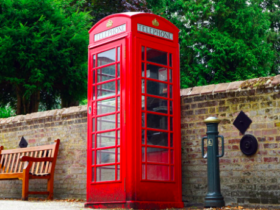Buddhism is one of the world’s oldest and most popular religions. Many people are familiar with Buddhism’s two main branches, Theravada and Mahayana, or are aware of subsects popularised by the West such as Zen (also known as Chan) Buddhism. But Buddhism itself originated in Northern India in the fifth century BCE and while it is not as widespread as Hinduism, it has become integral to Indian culture.
Due to the geographical proximity of the two developing religions, often many of their practices, principles and in particular iconography, intermingle and merge. Temples throughout both India and South-East Asia feature emblems of both religions, as each religion usurped and replaced the other at various times in India’s history. Cambodia’s Temples of Angkor are evidence of this sharing of space, the grand stone structures hosting images of a dancing Shiva next to the great and all-knowing face of Buddha.

While the religion’s practice lost much of its influence after the Gupta reign in 7th century CE, it has left an indelible mark on India – and not just because of astounding structures like the Ajanta Caves. According to a recent census, Buddhists make up 0.8% of India’s population; which may not sound like much, but with a population of 1.2 billion, that 0.8% includes 7.95 million people. India has seen a re-emergence of Buddhism in the last century due to its ramification with Indian intellectuals and the exile and subsequent diaspora of Buddhist Tibetans residing in India.
There are many Buddhist festivals celebrated in India. One example is the Jayanti festival, which is held on the full moon in May – this year falling on the 21st – and commemorates the 2578th birth anniversary of Gautama Buddha.
Siddhartha Gautama, an Indian prince and the first Buddha, was born in a place called Lumbini in the Himalayan foothills circa 563 BCE. Gautama renounced his royal origins after releasing the transitory nature of temporal life and attained Enlightenment – or Nirvana – while meditating under a Bodhi tree.
There are no set dietary rules in Buddhism and so the festival’s food varies depending on subsect and location. Generally, meat is avoided as the Buddha promoted compassion and unity with all sentient beings. Many orthodox Buddhists refer to non-vegetarian or spicy food as ‘dark food’ and certain foods, such as garlic, onion, leeks, coriander and shallots are known as ‘pungent foods.’ This is because in Buddhism, the denial of desire is necessary, as desires – even when sated – can only lead to suffering.
The cycle of Samsara teaches us that our bodies are temporary vessels and that to indulge in desire is to attach us further to the Wheel of Dharma. Eating these foods serves only to distract the self, and so foods such as vegetable pastes, tofu, cabbage, courgettes and beans are popular tasty yet moral treats.
Whatever your beliefs, visiting Amaya, one of London’s best fine dining Indian restaurants, is the perfect way to celebrate or discover this unique corner of the world. Amaya can cater to many religions’ dietary requirements and specialises in creating memorable evenings.























